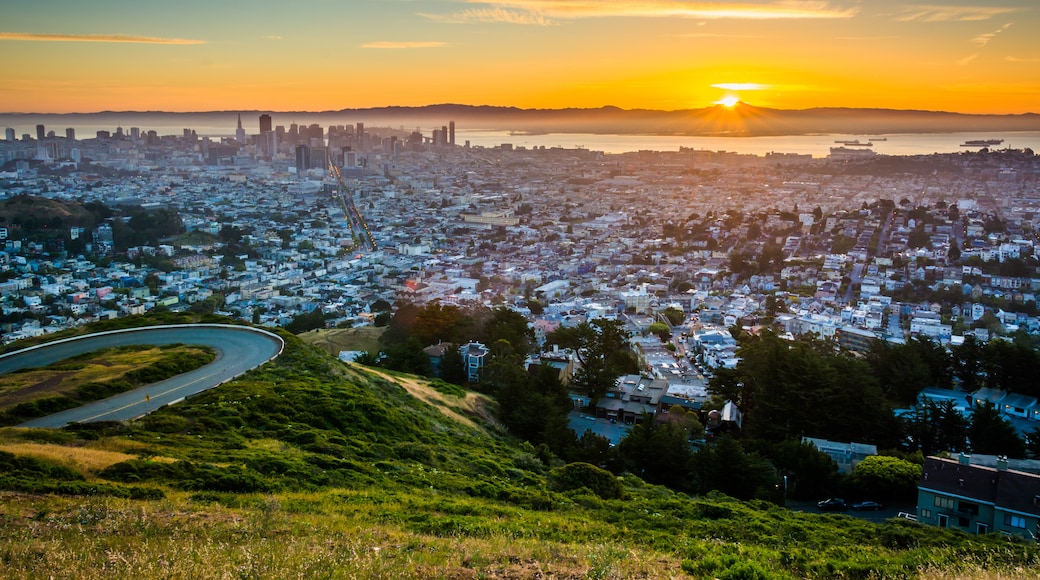From across the city, recognize Twin Peaks instantly by the soaring antenna tower that juts from a nearby summit. Even without Sutro Tower marking its location, this is a favorite destination in San Francisco. Many consider the peaks to be the city’s geographical center, which make them a great spot to enjoy panoramic views of the city and Bay Area below you.
Appreciate stunning views from the area’s parking lot. Walk along the sidewalk that runs from the parking lot partway around the hills. Check out your surroundings up-close using telescopic viewers. For a few cents, you can see many of San Francisco’s iconic landmarks through the viewers’ lenses.
If you have the time, follow the trails up the north and south peaks. Expect a 500-foot (150-meter) climb, with some steep terrain. Stop around the south peak and see San Francisco unfold before you. Map out the city’s neighborhoods on the horizon, bounded by the Pacific Ocean to the west and the stunning Golden Gate Bridge to the north. Try to identify Coit Tower and the Transamerica Building.
Gaze up at nearby Sutro Tower, one of the most recognizable features of San Francisco’s skyline. The alien-like radio and television antenna tower was constructed in 1973. At 977 feet (298 meters) from base to top, it is the tallest structure in the city. You cannot access the tower, but take advantage of the great viewpoints near its base.
San Francisco’s fog is almost as famous as the city. The hills stand tall above the city, so Twin Peaks is sometimes above the fog. Enjoy the unique elevated vantage point and watch the fog roll from the Pacific Ocean and blanket San Francisco.
Many people drive to Twin Peaks, so the limited parking spaces fill up quickly. Arrive early if you plan to come by car. Because the hilltops are so high, the area is often windy and colder than the city below. Wear an extra layer and bring sunscreen. Visit Twin Peaks any day until midnight.







